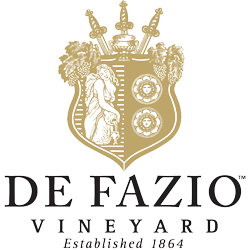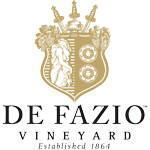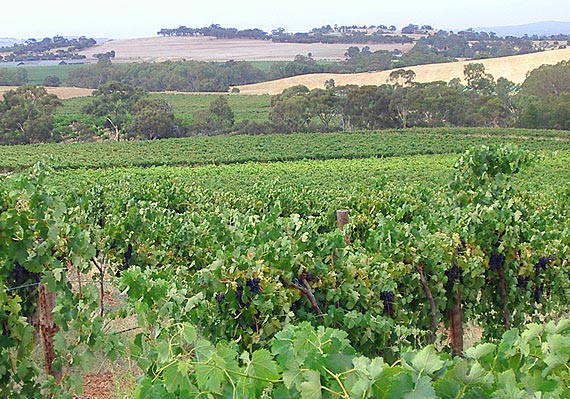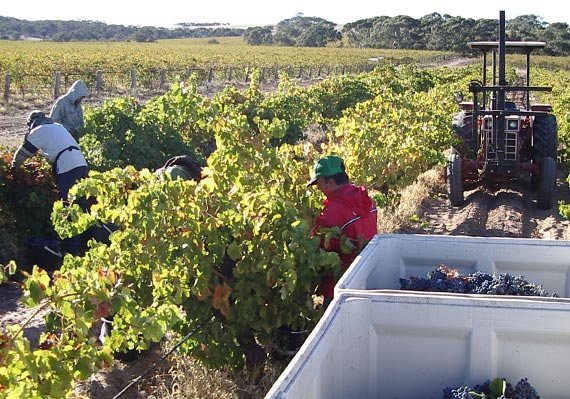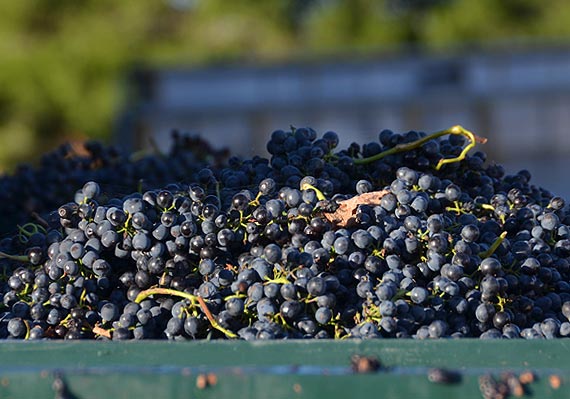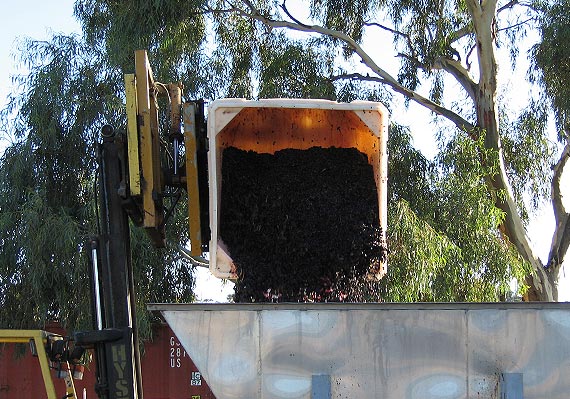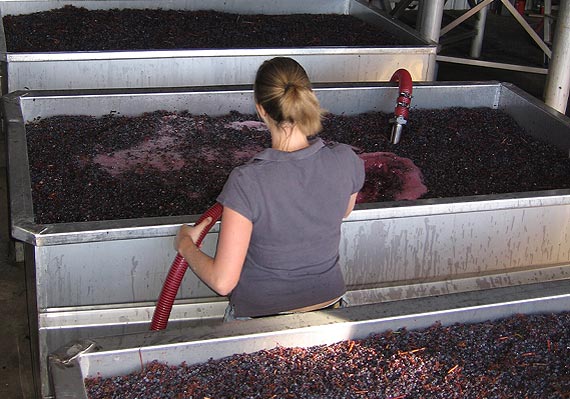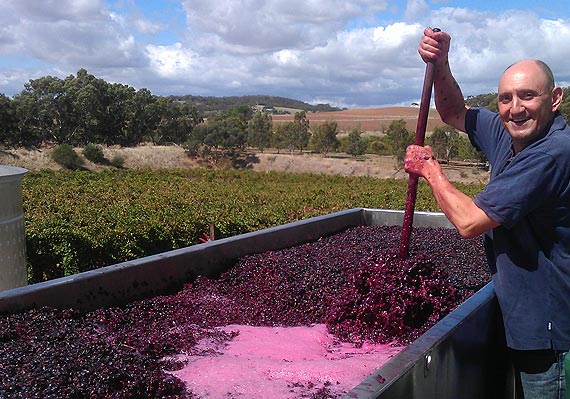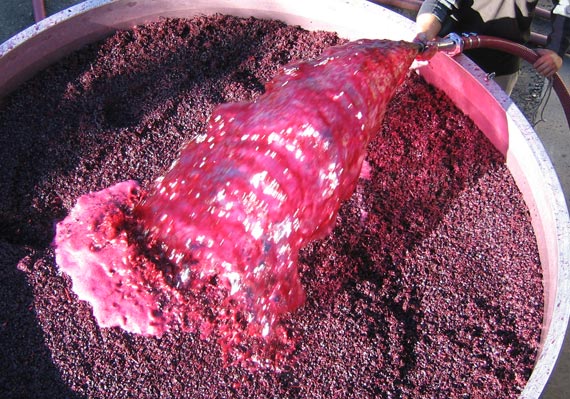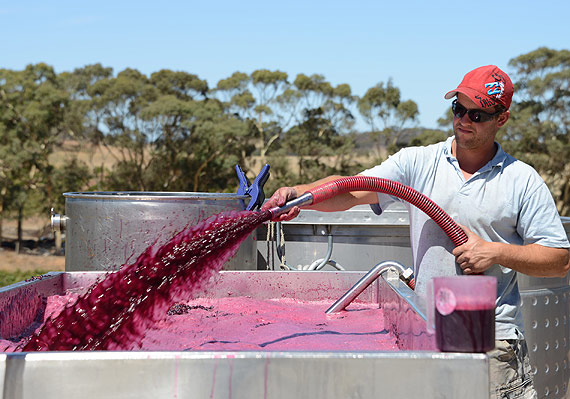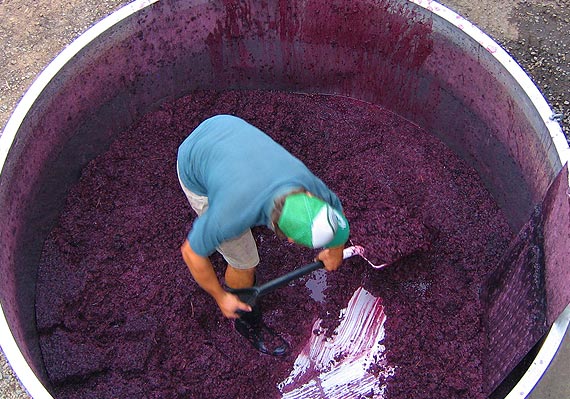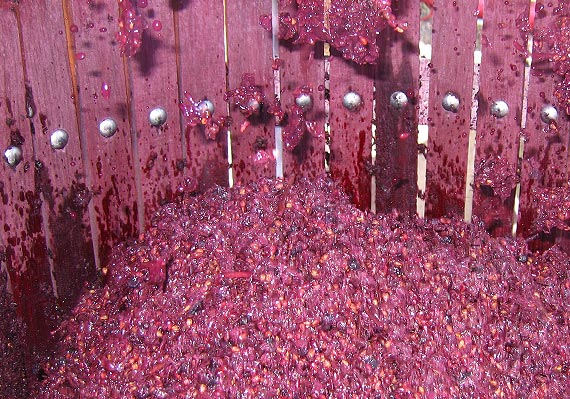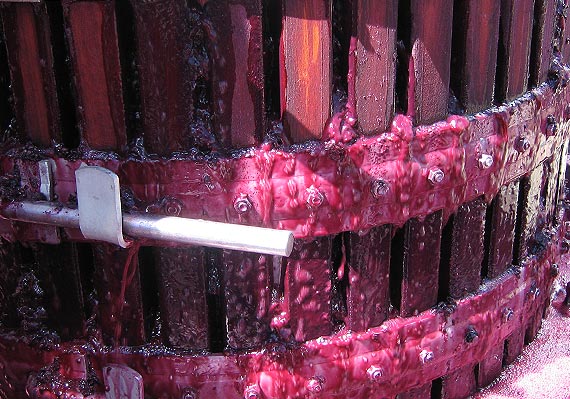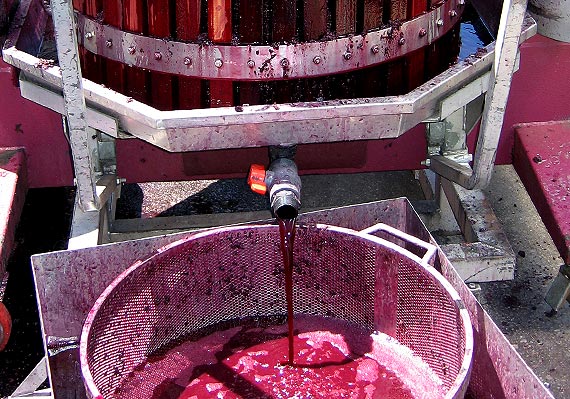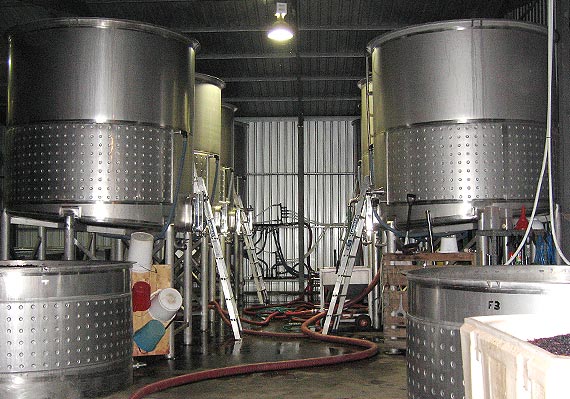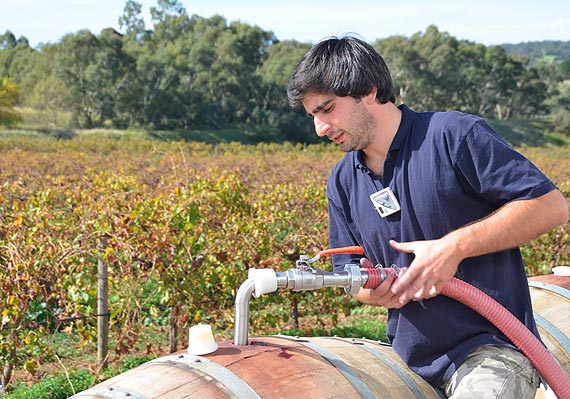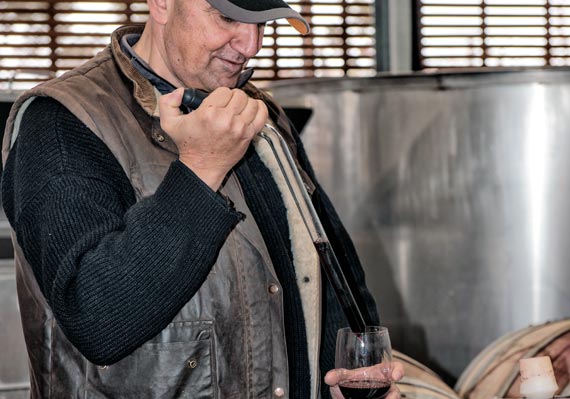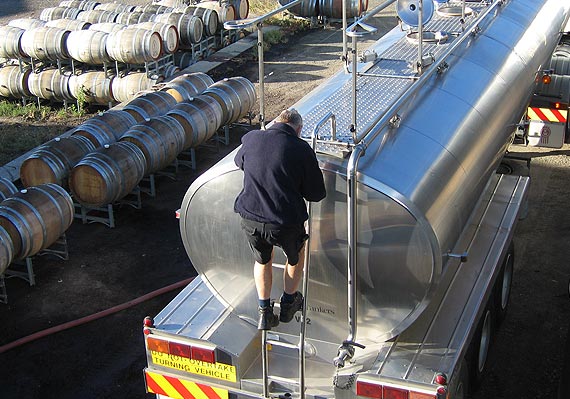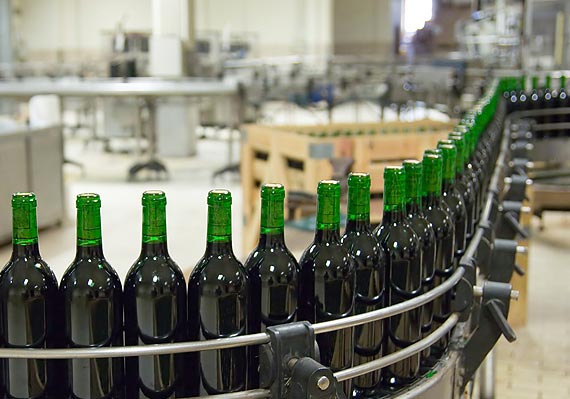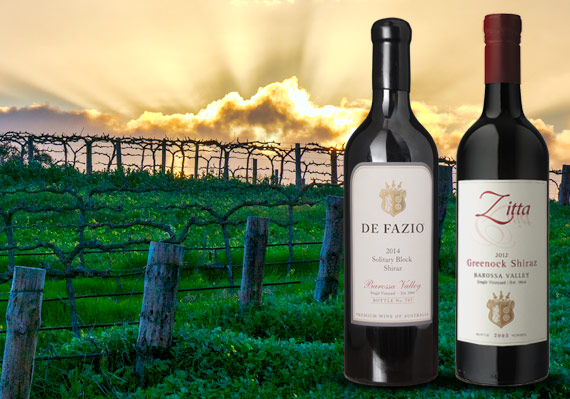IT ALL BEGINS WITH THE VINES
THE VINEYARD
![]()
Angelo attributes much of the high calibre of his wines to the topography of the De Fazio Vineyard and its varying soil profiles and elevations.
Section 560 is located on the slopes of the Moppa Hills along the mineral-rich banks of the Greenock Creek, about 4km (2.5 miles) out of the historic township of Greenock in the North Western corner of the world-renowned Barossa Valley. The entire vineyard has gentle slopes, with its highest point being 307m (1,007ft) above sea level.
This location provides varied ripening temperatures, which in summer can range from 35°C in the day to 8°C at night (95°F – 46.4°F). There are also cooling gully breezes in the late afternoon and early morning, which are said to give grapes grown in this intra-region their own distinct characteristics, highly sought after by Barossan winemakers.
With two branches of the Greenock Creek running through it – one in the North Western corner and the other in the South Eastern, the vineyard has been producing premium quality grapes for over one and a half centuries. It was established in 1864 by colonial settlers, and Angelo considers himself extremely fortunate to have acquired such a quality parcel of land.
![]()
Location
De Fazio Vineyard situated in the Greenock District, North West Barossa Valley, South Australia (approximately 4km, or 2.5mls, from the township of Greenock). Click to view De Fazio Vineyard location map.
Climate
Warm to hot. Dry Summers.
Average Seasonal Temperature Range.
Winter: 2C – 18C
Spring: 5C – 25C
Summer: 8C – 35C
Autumn: 7C – 22C
Click to view Growing Season Mean Temperature map.
Rainfall
Average rainfall is 508mm (20″), which includes 201mm (8.3″) during the growing season. Click to view Growing Season Rainfall map.
Topography
Undulating North West facing slopes, ranging from 250m to 307m (820.2 to 1,007.2ft) above sea level.
Soils
Shallow red clay and sandy loams over red clays. Mixture of sub-soils containing ironstone, sandstone, limestone, bluestone, slate and schistic gravels. Click to view Ancient Soils of the Barossa Valley map.
Viticulture
Original shiraz planted circa 1864. A succession of replanting and re-trellising has followed. Bush vines average height 600mm (2ft). Single-wire trellising 1.2m (4ft) is used. Rows are spaced 3.7m (12ft) apart, with vines planted every 2.4m (8ft). All blocks are hand-pruned. Bush vines and select blocks are also hand-picked.
Grape Varieties
Predominantly Shiraz – various select old clones. Grenache old bush vines, Mataro (Mourvedre) bush vines and Nero d’Avola.
Irrigation
Supplementary drip irrigation is available for use.
Environmental Aspect
Sustainable land management practices.
Soil profiles on the De Fazio Vineyard are quite varied, ranging from shallow rock at the high points to deep red clays near the creek banks.
All top soils are free draining, allowing water to soak deep down and encouraging our vine roots to travel just as far. Under the sandy red clays the vineyard has a combination of ironstone, limestone, sandstone, bluestone, slate and a bed of rounded alluvial gravel which runs through the centre of the vineyard. This gravel is the remains of an ancient river bed that ran through the valleys of the Moppa Hills.
The variety of soil profiles reflects the fascinating history of the region. In the mid 1880s Greenock Creek was panned for alluvial gold and the Moppa Hills were mined for both copper and gold, with many abandoned shafts still visible on nearby properties.
Through the De Fazio Vineyard, several quartz rifts were found to traverse the vineyard when the vines were first planted – a sure sign of gold, according to prospectors. But whether or not the precious metal’s really down there will remain a mystery as it’s Angelo’s preference to leave the soils alone, as they’re doing such a good job of producing precious grapes.
The planting and layout of the De Fazio Vineyard has taken full advantage of the varying soil profiles. Individual blocks have been planted in each distinct area, with every block producing grapes with their own distinctly individual characteristics.
This allows for the production of intense and complex single vineyard wines, without the need for regional or inter-regional blending, which would of course render them unreflective of the vineyard.
The sustainable vineyard management practices used in the De Fazio Vineyard are very environmentally friendly and have been practised for generations.
Angelo’s father believed you should never put anything in the ground that nature hadn’t intended. Counting spiders and ladybirds on the vines was always his way of ensuring nature’s balance was being maintained. Only minimal spraying is undertaken in the vineyard, using the basic organic sprays that have been used for decades. No pesticides are used, with weeds controlled by tilling.
Watering
Have you ever driven around after a big storm and noticed trees blown down in front lawns, but native bushland still standing?
You may already know the reason for this – it has to do with root depth. Trees grown in lawns typically have relatively shallow root systems, as they’ve grown accustomed to regular, shallow watering. Trees grown in bushland, however, have had to send roots deep down to find natural water sources in order to survive.
Vines grown with minimal water from planting behave in the same way, so this practice is employed on the De Fazio Vineyard. They also leave new vines to sprawl for the first two years before being trained.
While Angelo’s father was no expert in this area, he believed vines grown in this way would take up particularly intense flavours from the minerals and trace elements found deep in the ground, that shallow-rooted vines could never reach. And judging from the delightfully long palates of the wines, he was right!
It’s all about letting the vines find their own state of balance, so that they’re perfectly suited to their environment, and should not be confused with the potentially damaging process of deliberately stressing the vines.
Of course, there are times when additional watering simply must be provided, such as in times of drought, and a drip irrigation system has been installed in the De Fazio Vineyard for this purpose.
Pruning
Pruning is another essential element in their efforts to help the vines maintain a state of natural balance. Every De Fazio vine is hand-pruned to suit its individual requirements, and this is done in exactly the same way each year.
All pruning off-cuts, of course, together with grass clippings, find their way back into the soils – a great way of building top-soil nutrients (with the help of our friendly earthworms).
Native flora and fauna
Native grasses play an important part in the vineyard practice, and are allowed to grow down the middle of all vine rows. This reduces the growth of weeds and provides a home for many beneficial insects that prey on unwanted ones.
The native trees that surround the vineyard also provide homes to many native birds, which are extremely territorial and chase out grape-eating, non-native birds.
The De Fazio Vineyard history dates back to 1864 when the first block of Shiraz vines were planted in the deep red clays of the North Western corner of the property, near the banks of the Greenock Creek.
Owned by the original Colonial pioneer family for over a century, the majority of it planted to Shiraz, Grenache and Mataro (Mourvedre) grapes. It remained in their family until 1998, when it was purchased by Angelo De Fazio.
The fruit from the vineyard was used in the production of fortified wines and brandy spirit, as in the mid 1800s in Australia only a small proportion of grapes were used for the production of table wines. Most of the fortified wines produced back then were exported back to England, where Sherries and Ports were in high demand.
The vineyard also had several acres of apricot trees planted in the South Western corner of the property, which have since been replaced by a block of Shiraz we’ve called the “Apricot Block”. A single apricot tree has been left standing on the fence line and several of Angelo’s winemaker colleagues claim the fruit that comes from this block has a stone-fruit, apricot influence. If Angelo is honest he can’t pick it himself, but he does enjoy eating the apricots! (And so do the parrots.)
In the early 1980s, the vineyard – like many others in the Barossa Valley – fell victim to the government-driven “vine pull”, which saw hundreds of acres of old vines pulled out by growers in return for government incentives. Fortunately, however, a small section of bush vines did survive, and these are still producing high quality grapes today. In fact, a majority of the vineyard has been re-established from cuttings of these old vines, together with those from neighbouring vineyards that are among the oldest Shiraz vines in the valley.
A small block consisting of 13 rows has been planted with these old vine cuttings at the highest point of the vineyard in memory of Angelo’s father, who always claimed that cuttings taken from the strongest old vines are the most adaptable, as they’ve stood the test of time.
WHERE IT HAPPENS
![]()
Watch how we carefully turn our precious fruit into exquisite single-vineyard estate wines.
